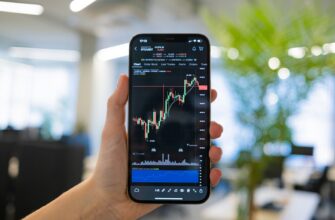## Introduction
Spot trading Ethereum (ETH) on Binance allows you to buy and sell the cryptocurrency directly at current market prices. The 1-hour timeframe is ideal for balancing detailed analysis with manageable monitoring, offering clearer trends than shorter intervals while avoiding the long commitments of daily charts. This guide provides a practical walkthrough for executing ETH spot trades on Binance using 1-hour charts, complete with strategy tips and risk management essentials.
## Prerequisites for Ethereum Spot Trading on Binance
Before trading:
– Create and verify a Binance account
– Complete KYC (identity verification)
– Deposit funds (e.g., USDT or BUSD) via bank transfer, card, or crypto
– Enable Two-Factor Authentication (2FA) for security
## Step-by-Step: Trading Ethereum on Binance Using 1-Hour Charts
Follow these steps to execute ETH spot trades:
1. **Access Trading Interface**
Log into Binance → Click [Trade] → Select [Spot] → Search for “ETH/USDT” pair.
2. **Set 1-Hour Timeframe**
On the chart, click the time interval selector (top-left) → Choose “1h”.
3. **Analyze the Chart**
– Identify trends: Upward (higher highs/lows) or downward (lower highs/lows)
– Add indicators: EMA (20-period) for trend direction, RSI (14-period) for overbought/oversold signals
– Draw support/resistance lines using horizontal price levels
4. **Place Your Order**
– **Limit Order**: Set buy/sell at specific prices (e.g., buy near support)
– **Market Order**: Instant execution at current price (use sparingly)
Enter ETH quantity → Confirm order.
5. **Set Risk Management Tools**
– **Stop-Loss**: Automatically sell if ETH drops 3-5% below entry
– **Take-Profit**: Lock gains at 1.5x risk-reward ratios (e.g., 5% stop-loss → 7.5% take-profit)
6. **Monitor and Close Trades**
Track price action hourly. Exit when:
– Target reached
– RSI crosses 70 (overbought) or 30 (oversold)
– Trend reversal confirmed
## Optimizing 1-Hour Timeframe Strategies
Boost success with these tactics:
– **Multi-Timeframe Confirmation**: Check 4-hour charts for broader trends
– **Volume Analysis**: High volume at breakouts reinforces signals
– **Candlestick Patterns**: Watch for engulfing patterns or hammers at key levels
– **News Alignment**: Avoid trading 1 hour before/after major ETH news events
## Risk Management Essentials
– Never risk >2% of capital per trade
– Use stop-loss orders on every position
– Avoid emotional trading—stick to your plan
– Test strategies in Binance’s “Sandbox” demo mode first
## Frequently Asked Questions (FAQ)
**Q: Why use 1-hour charts over shorter timeframes?**
A: 1-hour charts filter market noise, providing clearer trend signals than 5/15-minute charts while allowing daily trading opportunities.
**Q: Can I trade ETH spot 24/7 on Binance?**
A: Yes! Crypto markets operate 24/7, including weekends.
**Q: What’s the minimum ETH spot trade on Binance?**
A: Minimums vary by pair (e.g., 0.001 ETH for ETH/USDT). Check “Min Amount” on the order box.
**Q: How are Binance spot trading fees calculated?**
A: Standard fee is 0.1% per trade. Fees decrease with higher 30-day volumes or BNB holdings.
**Q: Is the 1-hour strategy suitable for beginners?**
A: Yes—it’s less volatile than scalping. Start small and prioritize risk management.
**Q: Can I automate ETH spot trades on Binance?**
A: Not for spot. Automation requires API integration with trading bots (use cautiously).
**Q: How do taxes work for ETH spot trading?**
A: Most countries tax crypto gains. Track all trades; consult a tax professional.
## Conclusion
Mastering ETH spot trading on Binance using 1-hour charts combines technical discipline with strategic execution. By following this guide—analyzing trends, setting precise entries/exits, and enforcing strict risk controls—you’ll navigate volatility confidently. Always start with small positions, continuously refine your approach, and never invest more than you can afford to lose.








